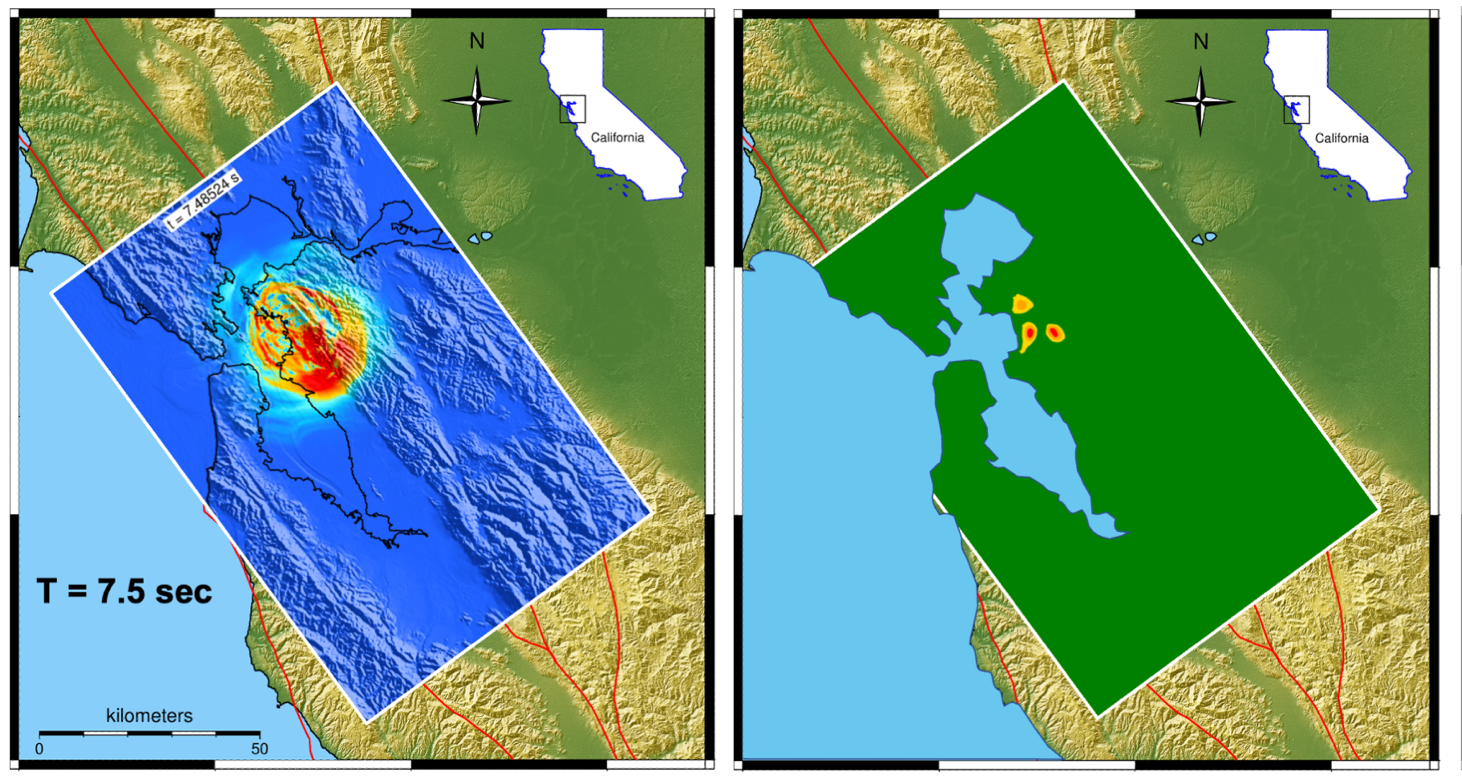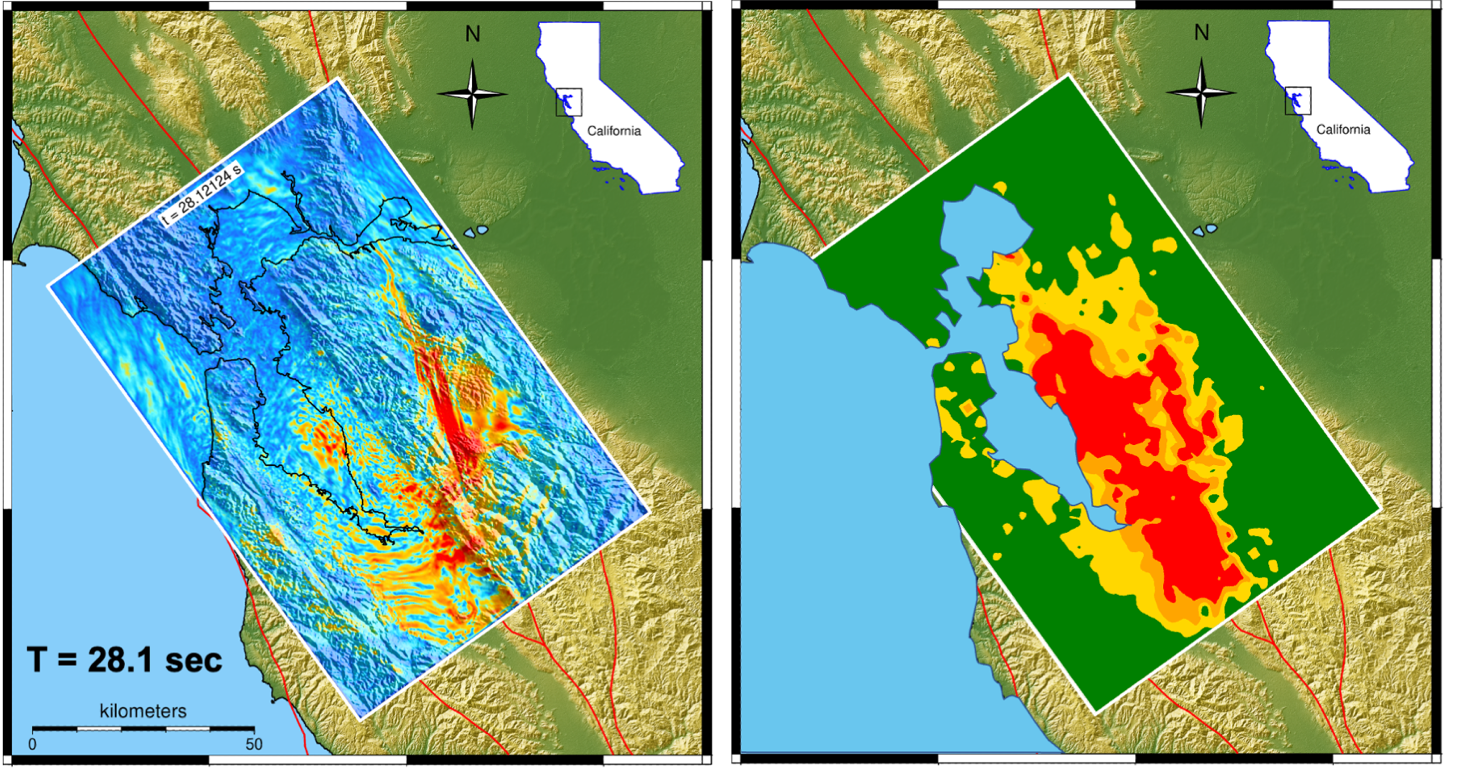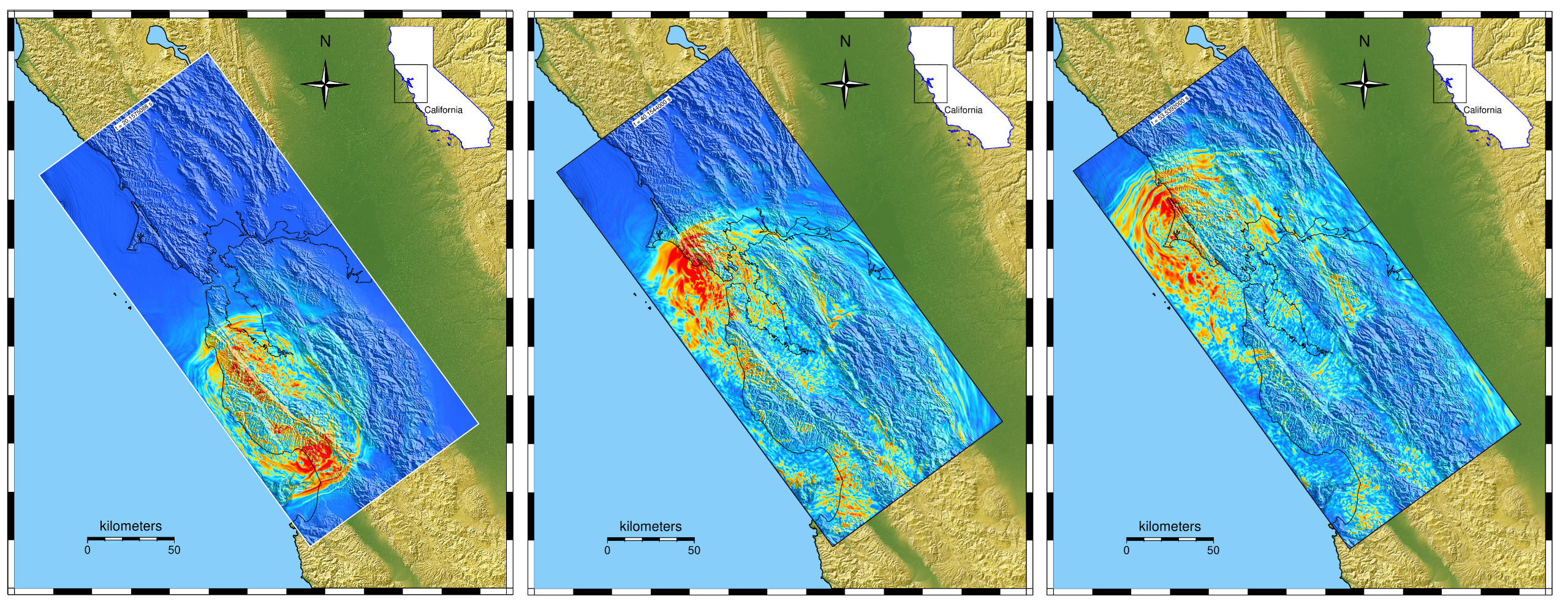November 2023
- Details
- Parent Category: resources
- Published on Thursday, 19 August 2021 07:29
EQSIM: Coupled End-to-End Earthquake Hazard and Risk Simulations
Research highlight
Over the past five years an integrated, multidisciplinary team from Lawrence Berkeley National Laboratory and Lawrence Livermore National Laboratory have developed the EarthQuake SIMulation (EQSIM) framework for fault-to-structure, regional-scale earthquake simulations under the U.S. DOE Exascale Computing Project. The EQSIM application development project is focused on creating an unprecedented computational tool set and workflow for earthquake hazard and risk assessment. Starting with a set of existing codes - SW4 (the fourth-order, 3D seismic wave propagation model developed at LLNL), NEVADA (a nonlinear, finite displacement program for building earthquake response), and OPENSEES (a nonlinear finite-element program for coupled soil-structure interaction) - EQSIM has created an end-to-end capability to simulate from the initiation of fault rupture to site-specific ground motions and ultimately to infrastructure response (Figure 1). EQSIM’s ultimate goal is to remove computational limitations as a barrier to simulation-based scientific exploration, understanding earthquake phenomenology, and practical earthquake hazard and risk assessments.
To achieve EQSIM goals, the SW4 code has been substantially advanced with many key new algorithmic features including depth-dependent grid refinement, domain-specific I/O based on HDF5 data structures, and optimization for massively parallel execution on a multiplicity of new DOE GPU-accelerated platforms. Over the five year development cycle of EQSIM, the SW4 software advancements, coupled with the DOE’s new GPU-accelerated exaflop Frontier computer, have substantially expanded frequency resolution and speed of regional scale simulations. For a large San Francisco Bay Area regional model (120km x 80km x 30km), Hayward fault simulations that were previously restricted to 2-3 Hz can now be computed to 8-10 Hz. The corresponding speed-up in earthquake simulation wall clock times is also allowing the execution of a much larger number of rupture realizations and thus a broader exploration of the problem parameter space. In the most recent runs on the Frontier system, M7.5 San Andreas fault ruptures have been simulated to 5 and 10 Hz on a larger domain (218km x 118km x 30km) with grids on the order 500B grid points (Figure 2). These simulation capabilities place a premium on continuous refinement of regional geologic models to constrain higher frequency simulations that are essential for infrastructure evaluations.
The SW4 code is currently available through Computational Infrastructure for Geodynamics.
Contributed by: David McCallen, University of Nevada, Reno and Lawrence Berkeley National Laboratory




Figure 1. Rupture simulation for an M7 Hayward fault event showing strong ground motions using SW4 (left) and resulting time synched evolution of building damage for a representative 12 story concrete building through coupling to OPENSEES and NEVADA (right). Hotter colors indicate larger ground motion and major building damage, respectively. Note the complex distribution of building damage.

Figure 2. Strong ground motions for a M7.5 San Andreas rupture scenario.
